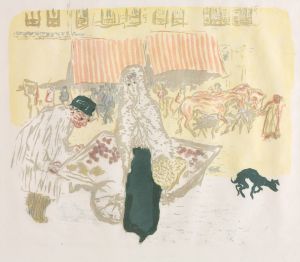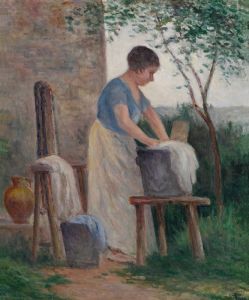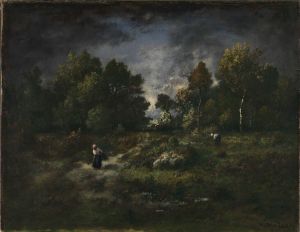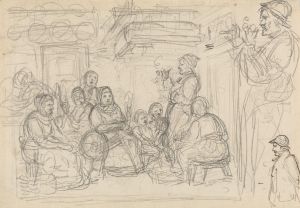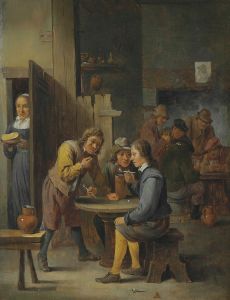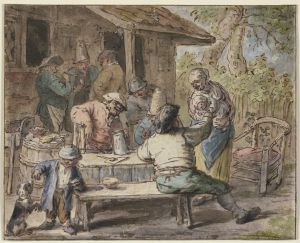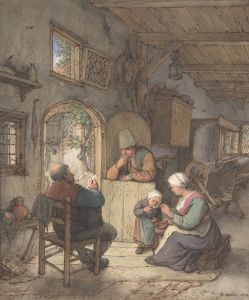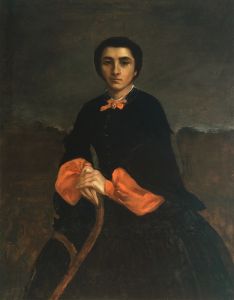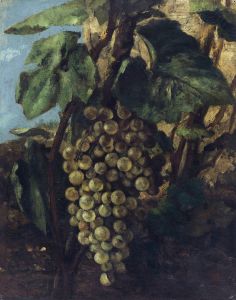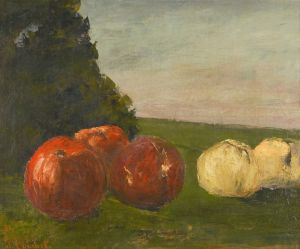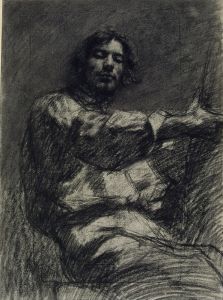
Les cribleuses de blé, esquisse
A hand-painted replica of Gustave Courbet’s masterpiece Les cribleuses de blé, esquisse, meticulously crafted by professional artists to capture the true essence of the original. Each piece is created with museum-quality canvas and rare mineral pigments, carefully painted by experienced artists with delicate brushstrokes and rich, layered colors to perfectly recreate the texture of the original artwork. Unlike machine-printed reproductions, this hand-painted version brings the painting to life, infused with the artist’s emotions and skill in every stroke. Whether for personal collection or home decoration, it instantly elevates the artistic atmosphere of any space.
"Les cribleuses de blé, esquisse" (The Wheat Sifters, Sketch) is a painting by the renowned French artist Gustave Courbet. Courbet, a leading figure in the Realist movement, is known for his commitment to depicting everyday life and ordinary people with a sense of authenticity and unidealized realism. This particular work, created in 1854, serves as a preparatory sketch for a larger, more finished painting titled "Les cribleuses de blé," which was completed in the same year.
The sketch depicts a group of women engaged in the labor-intensive task of sifting wheat. The scene is set in a rural environment, highlighting the agricultural practices of the time. Courbet's focus on the working class and their daily activities was a significant departure from the romanticized and often idealized subjects that dominated the art world in the mid-19th century. His work aimed to present a more truthful and unembellished view of society.
In "Les cribleuses de blé, esquisse," Courbet employs a loose, expressive brushwork that captures the movement and energy of the women as they sift the wheat. The sketchiness of the piece suggests that it was intended as a preliminary study, allowing the artist to experiment with composition, light, and form before committing to the final version. Despite its unfinished nature, the sketch conveys a strong sense of the physicality and rhythm of the women's labor.
Courbet's choice of subject matter reflects his political and social beliefs. He was an advocate for the working class and often used his art to highlight the dignity and importance of their labor. By focusing on the wheat sifters, Courbet not only documented a common rural activity but also paid homage to the resilience and strength of the women who performed such tasks.
The final version of "Les cribleuses de blé" was exhibited at the Salon of 1855, where it garnered significant attention and praise. The finished painting is more detailed and polished, but it retains the same sense of realism and respect for the subject that is evident in the sketch. Both the sketch and the final painting are considered important works in Courbet's oeuvre, exemplifying his commitment to Realism and his ability to capture the essence of everyday life.
"Les cribleuses de blé, esquisse" is currently housed in the Musée des Beaux-Arts de Nantes, where it continues to be appreciated for its historical significance and artistic merit. The sketch provides valuable insight into Courbet's creative process and his dedication to portraying the lives of ordinary people with honesty and empathy.





